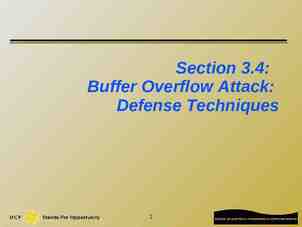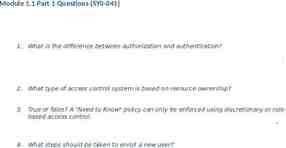What is Texas Healthy at Home and Exactly What Are They Up To? DONALD
32 Slides8.49 MB
What is Texas Healthy at Home and Exactly What Are They Up To? DONALD R. SMITH, CEO THURSDAY, AUGUST 18 T H 10 AM
Overview Megatrends in Health Care and Social Services TH@H Mission and Vision TH@H Business and Strategic Plan Getting Your Feedback Recent Accomplishmen ts
Big Picture Multiple Choice How many stars are estimated to be in the known universe?* a) 100 thousand million (11 zeros) b) 200 billion trillion (23 zeros) c) An infinite number d) Only the aliens controlling the matrix know for sure *Estimates made before new James Webb Telescope recently discovered new galaxies
Aging Network Megatrends Improving business acumen of aging network Addressing social determinants of health Transition to managed care
Improving the Business Acumen of the Aging Network Decade of unfunded business acumen learning collaboratives 2013-2014 learning collaborative State/Community Think Tank (January 2021) 10 State Units, 6 community organizations Texas Healthy at Home received 125,000 to participate 12 Network Lead Entities (NLEs) funded (2021) Texas Healthy at Home received 292,000 (August 2021)
Addressing Social Determinant s of Health (SDOH)
American Medical Association Policy (November 2020) Goal: Address SDOH as part of health insurance coverage Ensure patient access to services addressing critical nonmedical health needs and underlying SDOH Strategies: Encourage new and continued partnerships among government, private sector, philanthropic, and community- and faith-based organizations Support continued public and private health plan efforts to address SDOH in insurance benefit designs
American Medical Association Policy (November 2020) Encourage public and private health plans to examine implicit bias and the role of racism and SDOH through such mechanisms as professional development and other training Support research to determine- how best to integrate and finance non-medical services as part of health insurance benefit design impact of covering non-medical benefits on health care and societal costs
Transition to Managed Care Texas Star Plus (Medicaid Managed Care for older adults and people with disabilities) - started 2014 Star Plus Plans: Amerigroup, Molina, Superior, United, HealthSpring Chronic Care Act 2018 allows Medicare Advantage plans to cover nonmedical social services Growth in Medicare Advantage (MA) Plans 45% Texas Medicare beneficiaries now enrolled in MA Plans
Medicare Advantage Plans in Texas 2022 Top 10 Highest Enrollments El Paso County (69%) Hidalgo County (68%) Starr County (67%) Willacy County (65%) Cameron County (63%) San Patricio County (62%) Jim Wells County (62%) Zavala County (62%) Kleberg County (61%) Nueces County (61%)
Another Big Picture Multiple Choice Question Why do health care professionals and insurance companies suddenly care about social services? a) Social determinants of health account for 50% of health outcomes b) They feel sorry for community-based organizations and want to give them more money c) Hospitals and doctors are increasingly being paid based on patient outcomes (value-based care) d) A&C e) All of the above
Texas Healthy at Home (TH@H) Mission What is Texas Healthy at Home and Exactly What Are They Up To? Lead the creation of an integrated health and human service delivery system that addresses social needs, improves care outcomes, and enables Texans to live at home with dignity and independence. Texas Healthy at Home (TH@H) Vision Increase access to affordable health and human services so all Texans can enjoy independence and the highest quality of life.
Building a Bridge Between Health Care and Social Services
Building a Bridge Between Health Care and Social Services What does TH@H do? Develop and manage Provider Network Collectively market Provider Network to potential payers (i.e., federal, state government; integrated health care systems; health insurance companies; foundations) Provide administrative functions for the network
Building a Bridge Between Health Care and Social Services Why is TH@H needed? Area Agencies on Aging (AAAs) and Community-Based Organizations (CBOs) in Texas- Not organized to take full advantage of contracting opportunities with Health Care Entities (HCEs) Lack capacity to provide uniform, consistent services with superior quality across multiple HCE service areas Health Care Entities- Lack “one stop shop” access to full range of community-based services that address SDOH across geographic areas
How will TH@H position AAAs and CBOs to take better advantage of HCE contracting opportunities? TH@H's growing Provider Network will have the capacity to deliver reliable services across wide geographic areas, beginning with scalable evidenceinformed and Evidence-Based Programs (EBPs), that may be more easily replicated with fidelity than other social services currently being delivered inconsistently by AAAs and CBOs. These services may be provided face to face and remotely across wider geographic areas to fill service gaps.
Bridge Between Health Care and Social Services 5 Steps of Bridge Building Step 1 – Survey the bridge location: Before construction, study the location. Texas has diverse geography, variation and motivation among community-based organizations. Step 2 – Build the beam bridge foundation: TH@H is developing relationships with a wide variety of health care and social service providers. Step 3 – Secure beams to foundation: Match health care payor needs with the capacity of community-based organizations. Step 4 – Add planks to the bridge: Develop uniform communitybased services across wide geographic areas. Step 5 – Test the weight capacity: Negotiate multiple contracts with health care payers and improve quality and consistency of services. What steps are we missing?
Building a Bridge Between Health Care and Social Services Target Markets: 1. Provider network members 2. Integrated health care systems 3. Medicaid Managed Care Plans 4. Medicare Advantage Plans 5. Federal departments
Building a Bridge Between Health Care and Social Services Top Competitors 1. National, statewide home health agencies 2. Integrated health care networks that hire additional staff to provide services also provided by AAAs and CBOs 3. Large insurance company health plans that hire additional staff to provide services also provided by AAAs and CBOs
Building a Bridge Between Health Care and Social Services TH@H Priorities (2022-2023): 1. Manage current contracts with integrity to increase probability of continued funding 2. Continue building administrative infrastructure by enhancing human resource functions, policies and procedures, contract management, accounting, customer management and funding proposal development systems 3. Continue building TH@H credibility and visibility through monthly newsletter, training and education opportunities, increased usage of TH@H statewide class registration and documentation system
Building a Bridge Between Health Care and Social Services TH@H Priorities (2022-2024): 4. Pursue additional startup capital from membership fees, current funders, foundations and HCEs 5. Continue developing capacity to deliver EBPs and other services statewide by recruiting more network members that can expand their service areas 6. Create a strategic plan based on priorities 1-5 What else do you think TH@H needs to be working on? Is there anything TH@H needs to stop doing?
What has TH@H been up to in the past 18 months? 1. One of six organizations invited to participate in State Community Think Tank ( 125,000) 2. One of 12 Network Lead Entities (NLEs) funded by US Administration for Community Living ( 292,000) 3. Two grants from Baylor Scott and White Health Care to create Dementia Capable Systems ( 120,000) 4. Developed capacity to deliver virtual programming statewide. Served over 400 professionals and caregivers
Zip Code Map of Areas Served 2021-2022
What else has TH@H been up to in the past 18 months? 5. Rebranding; website redesign; migration to Office 365; revised bylaws; policies and procedures; contract management; payroll systems; monthly newsletters 6. Developed capacity to do webinar registration and hosting and offer continuing education units 7. Co-hosting Texas Takes on Falls Coalition with WellMed Charitable Foundation 8. On track to serve over 1,000 professionals and caregivers with virtual programming in 2022-2023, including training that fulfills HHSC requirements for AAA and ADRC staff
Key Partners Alzheimer’s Association (of Texas) BakerRipley Baylor Scott & White Health Baylor Scott & White Health Plan Brazos Valley Council of Governments AAA of the Brazos Valley Capital Area Council of Governments AAA of the Capital Area Central Texas Council of Governments AAA of Central Texas Coastal Bend Council of Governments AAA of the Coastal Bend Collaborative Consulting Community Council of Greater Dallas Dallas AAA Deep East Texas Council of Governments AAA of Deep East Texas ADRC of Deep East/Southeast Texas DFW Hospital Council Foundation Healthy Tarrant County Collaboration Heart of Texas Council of Governments AAA of the Heart of Texas
Key Partners Houston-Galveston Area Council l Houston-Galveston AAA Houston Health Department Harris County AAA Care Connection ADRC James L West Center for Dementia Care Lower Rio Grande Valley Development Council AAA of the Lower Rio Grande Valley Meals On Wheels of Tarrant County Meals on Wheels Texas Nortex Regional Planning Commission AAA of North Texas ADRC of North Texas North Central Texas Council of Governments AAA of North Central Texas Sixty & Better Texas A&M AgriLife Extension Texas A&M Center for Population Health and Aging Texas Association of Promotores & Community Health Workers Texas Association of Regional Councils Texas Association of Area Agencies on Aging Texas Health and Human Services Texas Takes on Falls Coalition University of North Texas Health Science Center University of Texas at Arlington School of Social Work WellMed Charitable Foundation
Upcoming Training Events: August & September August 24th 10 Warning Signs of Alzheimer's (in Spanish) for community health workers, but anyone is welcome September 7th Life Enriching Activities for Early Stage Dementia for family and friend caregiver of persons with dementia Septemb er 13th Building Better Outcomes: Models to Enhance Patient Care for Older Adults for health care entity CEOs, COOs and CMOs September 20th Building Better Outcomes: Models to Enhance Patient Care for Older Adults for health care entity leaders in Nursing, Quality, Diversity, Population Health, PostAcute Care and Social Work September 21st 10 Warning Signs of Alzheimer's (in English) for anyone September 28th Promoting Health Equity through Culturally and Linguistically Appropriate Service (CLAS) Standards, Part One - Developing a Shared Understanding for AAA staff, ADRC staff, community health workers, nurses, social workers and community-based organization staff
Upcoming Training Events: October October 5th Life Enriching Activities for Mid Stage Dementia for family and friend caregivers of persons with dementia October 5th Promoting Health Equity through Culturally and Linguistically Appropriate Service (CLAS) Standards, Part Two - Becoming a Health Equity Advocate for AAA staff, ADRC staff, community health workers, nurses, social workers and community-based organization staff Octobe r 28th Basic Training for Working with Veterans, Veterans 101 – The Basics for AAA staff, ADRC staff, community health workers, nurses, social workers and community-based organization staff
Upcoming Training Events: October November 2nd Life Enriching Activities for Mid Stage Dementia for family and friend caregivers of persons with dementia November 4th Basic Training for Working with Veterans, Veterans 102 – Understanding VA Benefits and Services for AAA staff, ADRC staff, community health workers, nurses, social workers and community-based organization staff Novembe r 18th Basic Training for Working with Veterans, Veterans 103 – Special Needs and Resources for AAA staff, ADRC staff, community health workers, nurses, social workers and community-based organization staff
How You Can Get Involved 1. Become a Board Member 2. Attend TH@H Network Development Meetings 3. Become a Texas Takes on Falls Strategic Planning Committee member 4. Attend our training events / tell others 5. Ask to be added to our distribution list 6. Become a member of Texas Healthy at Home
Questions?
For more information or to get involved: [email protected]





































